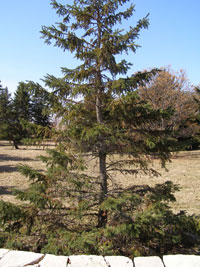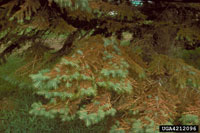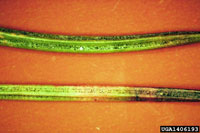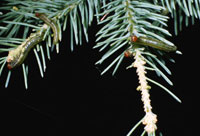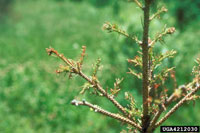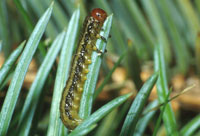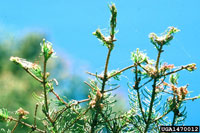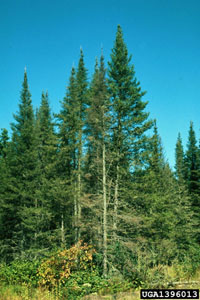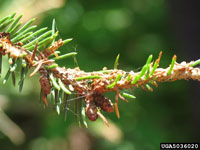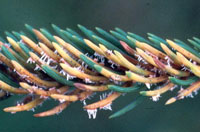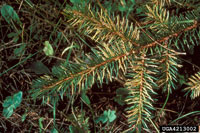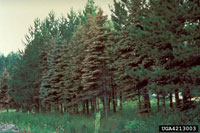Extension > Garden > Diagnose a problem > What's wrong with my plant? > Evergreen Trees and Shrubs > Spruce > Missing or chewed needles
Spruce > Needles > Missing or chewed needles
1 of 4
Rhizosphaera needle cast
Rhizosphaera kalkhoffii
- Infected needles turn brown or purplish brown late in winter or early spring
- Needles at the branch tips remain green, while older needles closer to the trunk of the tree become discolored
- Tiny black dots can be seen with a hand lens on infected needles
- Discolored needles fall off mid summer; tree looks thin and bare
- Damage typically starts on the lower branches and moves up the tree
- Most common on young Colorado blue spruce, but infects all spruces
- More information on Rhizosphaera needle cast
2 of 4
Yellowheaded spruce sawfly
Pikonema alaskensis
- Needles are partially or completely consumed
- New growth is eaten first, then old growth
- Larva first appear from late May to mid June and feed until late June to late July
- Has reddish brown head, light and dark green longitudinal stripes, grows up to 3/4 inch long
- More information on Yellowheaded spruce sawfly
3 of 4
Spruce budworm
Choristoneura fumiferana
- Branch tips or branches defoliated
- Needles webbed together in clumps and attached to twig, turning reddish brown by July
- Larva has black head, light brown to gray brown with small spots, up to 1 inch long
- More information on Spruce budworm
4 of 4
Spruce needle rust
Chrysomyxa spp.
- Needles at the tips of the branches (current year needles) turn yellow
- Pale orange to white tube like projections appear on infected needles in July or Aug and release powdery orange spores
- Severely infected trees may have a tan to pinkish cast
- Infected needles fall off in September
- Some species of rust can cause witches’ brooms, a clump of small weak branches arising from one point on a large branch
- More information on Spruce needle rust



